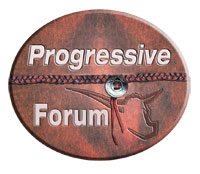Progressive Forum is a compilation of viewpoints from cattle producers on a given topic. Hear what those with boots on the ground have to say about the issues. What stockmanship practice has improved animal welfare on your operation?

Padlock Ranch Company
Ranchester, Wyoming
The application of low-stress cattle-handling techniques has probably had the greatest impact on animal welfare on the Padlock Ranch.
We have had on-site trainings from cattle-handling industry experts such as Bud Williams and Dillon Biggs to teach our staff how to handle cattle without crowding, pushing or excessive use of hotshots.
All of our calves are handled in this manner, and it is evident in their behavior and performance.
Our calves are handled often after weaning. They are worked through the chute multiple times for application of preventative vaccines and sorting. By handling cattle quietly and with good techniques, working them can be accomplished without them getting excited and showing signs of stress.
If they have a good experience being handled and coming through the chute the first time, we find they move quietly and calmly the next time. Our customers have commented to us on the cattle’s manner as they are unloaded from the truck and moved to their facilities.
The application of these techniques is really a change in mindset of people. The idea is to make it easy for cattle to do what you want them to do – not forcing them but allowing them. Animal welfare is important and good animal-handling techniques can have a substantial and positive impact on cattle.

J.P. Heber, Cow-calf operator
M&H Land and Cattle
Zell, South Dakota
Low-stress cattle handling, hands down. When I first heard the term “low-stress cattle handling,” I wondered if it was a typo, as I didn’t think those four words could ever exist in the same book, let alone paired together as one term.
The first seminar I went to I thought it seemed pretty far-fetched to believe that by giving cattle more time to make the choice on their own it would take less time to get the job done.
However, after trying it, being “highly encouraged” by my wife to stick with it and ultimately making the choice each time I handle cattle to use low-stress techniques, we are reaping the benefits big time.
The cattle are in better condition, calmer, have better pregnancy rates, gain better, work faster and are more responsive to us. We are a lot more confident in culling for disposition now than ever before because we know we gave the cattle a positive, low-stress experience – so those that naturally have a bad attitude stick out like a sore thumb.

Rich Roth, Cow-calf operator
IX Ranch • Big Sandy, Montana
I would have to say, without a doubt, employee education. The IX Ranch is a Beef Quality Assurance (BQA) certified ranch, which means all our employees have been through animal welfare training.
Employees are educated in the classroom as well as in the field. The ranch spends time with employees, educating them on practices that reduce animal stress and foster animal husbandry. Our employees are trained to use body position and flight zone areas instead of yelling and chasing.
We arm our employees with livestock paddles and flags instead of hotshots and whips. We train our employees to be stockmen and stockwomen, not cowboys and cowgirls.
We utilize techniques developed by livestock handling pioneers like Bud Williams and Temple Grandin to herd and work cattle in the most stress-free manner possible.
We have found that by working slower and more quietly we can actually accomplish jobs faster when it comes to trailing cattle or working them through the corrals. By implementing BQA and best management practices, we have created stockmen and stockwomen as well as a high-demand food product, which is what our consumers demand.

Dan Dorn, Supply Director
Decatur County Feedyard
Oberlin, Kansas
Not necessarily a practice, but – continuous training and awareness. We discuss and remind employees on an ongoing basis the importance and benefits of animal handling and animal welfare.
Cattle just do better when they are handled with care. Truck drivers also need continuous training. One additional bruise from swinging a gate during load-out can cost 40 pounds of trim, or approximately $80, just because someone gets in a hurry.
Another important point in a commercial feedyard setting is who may be watching. Customers and vendors are in and out of the yard every day. One mishandled steer because the pen rider is having a bad day is no excuse when “Joe Public” sees the blow-up and makes a media frenzy out of it.
We just do not allow it at Decatur County. From a liability standpoint, if the steer wins and someone gets hurt, the feedyard is open to a claim.
Our Micro Beef Accu Trac system, where we process and measure, individually manage and sort, is designed for swift non-invasive flow of cattle. In short, the cattle pretty much move through the five stations on their own, stress-free, and then go right back on feed after sorting.
System design, from shadows, lighting and noise, are all important aspects of animal welfare. ![]()







